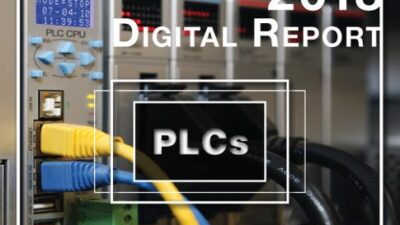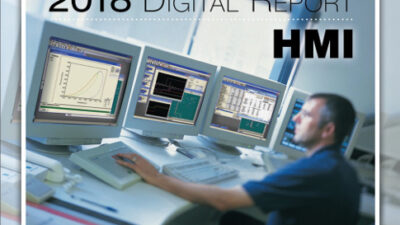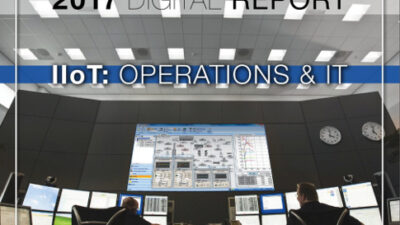With System Platform 3.0 and InTouch 10.0 software, Wonderware has stepped up to the challenge by creating one common underlying integrated development environment to address all these factors with consistency, flexibility, and efficiency. Wonderware Development Studio, built on ArchestrA technology, supports developing and maintaining both System Platform 3.
With System Platform 3.0 and InTouch 10.0 software, Wonderware has stepped up to the challenge by creating one common underlying integrated development environment to address all these factors with consistency, flexibility, and efficiency. Wonderware Development Studio, built on ArchestrA technology, supports developing and maintaining both System Platform 3.0 software, the company’s industrial application services platform, and InTouch 10.0 software, its HMI visualization product. Additionally, the Wonderware Development Studio delivers loads of new tools and enhanced capabilities for greater ease and accelerated development, deployment, and extension of industrial automation and information applications.
“The Integrated Development Environment within the Wonderware Development Studio is where you define, develop and modify everything, starting with the common plant model, all object templates, and new vector graphics,” says Rashesh Mody, vice president of the Wonderware HMI/SCADA business. “Both System Platform 3.0 and InTouch 10.0 software are standalone products — but joined together, you get significant additional benefit,” with InTouch 10.0 HMI becoming the visualization client to the System Platform 3.0 software server — both built on ArchestrA technology. The Wonderware Development Studio is the centralized development, maintenance and networked deployment environment for addressing all user needs, including engineering, operations, and IT.
Plant Model is Core
“The plant model is central. It’s where you depict the way the plant is laid out and where you view the entire enterprise,” says Steven Garbrecht, Wonderware marketing program manager for platforms and SCADA. “The abstracted model is built-up using standard object templates.” These are based on stored library elements that are re-used to assemble application functions, equipment, graphics, alarms, messages, I/Os, KPIs, calculations, interfaces, and IT hardware — in essence, anything that can be represented and modified as a template. Scripting capabilities enables developers to uniquely configure and extend functions in one central space that subsequently are deployed as multiple instances with unique behavior across the enterprise. The common plant model provides a single consistent definition of physical equipment, data acquisition and processing, MES operations, process graphics and alarms.
“In the past there was typically a clear delineation between development and runtime execution,” says Garbrecht. “Now, when using the System Platform 3.0 software with ArchestrA technology, it’s blurred. Now, you can develop a template, drag and drop it into the System Platform 3.0 software model, right click, and it automatically binds to the runtime environment — without developing any code to connect anything. That’s the beauty and power of it,” he says.
The new development environment also makes it easy to embed Microsoft .NET controls to extend the application, with server side, managed code — something that was more cumbersome before, with earlier client side, ActiveX controls. Fluid, flexible encapsulation now empowers a straightforward hierarchy of embedding .NET controls within scripts; scripts within object templates; and the standard templates within the plant model. The encapsulation of all this power in a single standard template is then available for centralized deployment across multiple sites as instances that inherit all attributes and characteristics of the standard template within the model.
The dynamic power of the common plant model moves well beyond simple tag databases of traditional HMIs, resulting in improved development productivity, engineering reuse, and reduced lifecycle costs.
The Power of Templates
Standard templates can be custom configured for individual plant sites by using scripting capabilities in the Wonderware Development Studio. As best practices emerge from any individual plant based on custom configurations, or arise from site-specific objects developed to investigate and monitor isolated processes, those custom configurations or extensions can be added back to the standard template and model, and subsequently redeployed to all sites as the new standard template. This greatly simplifies maintenance management and extension of the central model with enforced consistency and economy of effort across the enterprise.
A significant benefit of the new vector-based graphic templates are that they are resolution neutral. This makes them eminently scalable with complete fidelity, from wall panel displays down to hand-held devices. The Wonderware Development Studio comes equipped with a symbol library of graphic elements as well as graphic primitives.
Every graphical element can be edited with ease. Every attribute can be individually animated. The complexity of graphical-display richness is simplified at the same time that screen presentation control is amplified, adding dynamic morphing of any element via gradient color change or resizing as critical importance increases. This adds contextual intelligence to graphics.
“All graphics have intelligence behind them, with the graphic and associated application logic now together in the graphic template,” Mody says. “If you want to change the graphic, you change the standard template and it gets propagated across all deployed instances.”
Centralized Power and Control
Through the power of the Wonderware Development Studio, System Platform 3.0 software and InTouch 10.0 HMI provide an industrial-strength technology infrastructure that delivers critical domain services. These include:
Robust, reliable, real-time, peer-to-peer communications with no additional engineering
Microsoft Windows security extended to the physical equipment layer
Inherent fault-tolerant reliance without additional hardware
Fully distributed, comprehensive alarm management
Common name space for simplifying information integration
Easy import/export migration and integration to legacy systems
Centralized control of host computers with powerful diagnostics
“The Wonderware Development Studio is used to establish comprehensive standards for assembling common templates for driving consistency across the entire enterprise,” says Garbrecht. “It unlocks the potential of collaborative operational performance through one common means of integration, pulling everything together and providing better coordinating of development, maintenance, and extension of all applications. It enables you to get started today — and change and extent your system tomorrow to be more agile and responsive to changing competitive pressures.”


